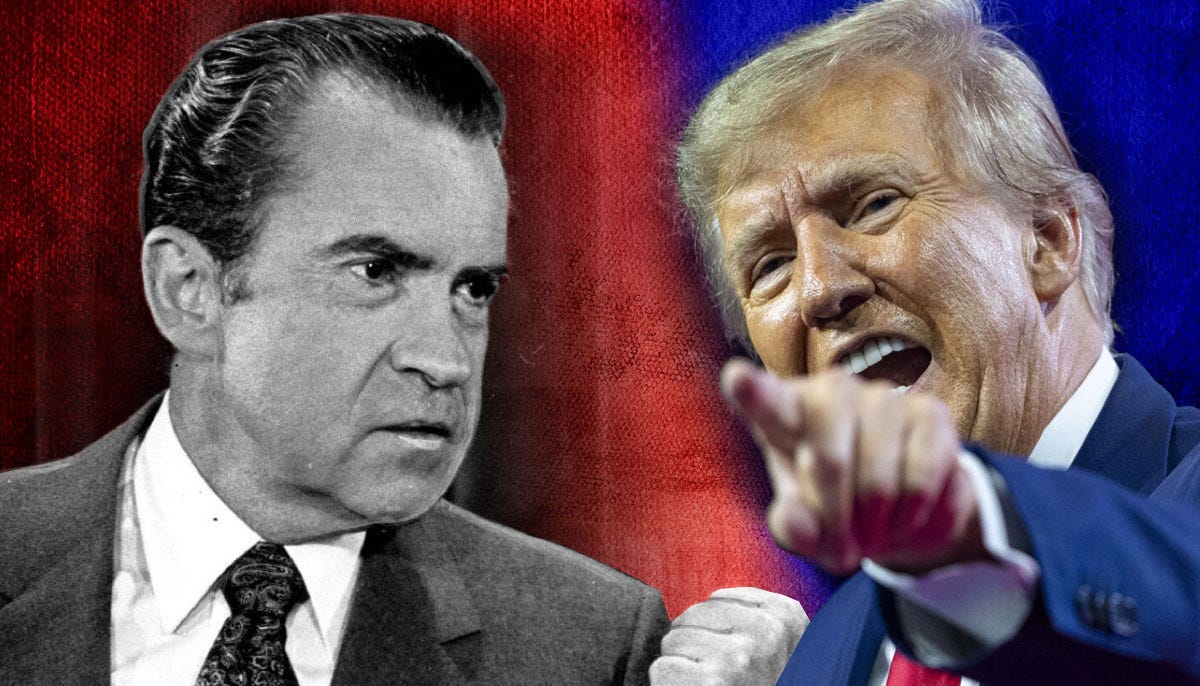Introducing Trump’s Southern Strategy 2.0: How Racial Politics Shaped Modern America
New Five-Part Series
Enjoying the content? Help support independent journalism by becoming a paid subscriber!
Donald Trump’s rise to political prominence didn’t just change the trajectory of the Republican Party—it reignited one of the most infamous strategies in American political history.
In the late 1960s, Richard Nixon’s campaign employed the Southern Strategy, a calculated effort to win over white Southern voters by appealing to racial resentment and fears of social change.
Decades later, Trump revived and expanded this tactic, giving rise to what we can call Southern Strategy 2.0.
This new version not only relied on subtle dog whistles but also included more overt forms of racism, demonizing immigrants and empowering white nationalist groups.
The consequences of this strategy continue to shape the political landscape, deepening racial and cultural divides in America.
In this series, I’ll take an in-depth look at the evolution of the Southern Strategy, how Trump adapted it, and the lasting political consequences of this approach.
Why This Series Matters
The political climate in the U.S. today is more polarized than ever. Racial tensions, cultural divisions, and growing fears about demographic changes have become defining features of modern American politics.
Understanding Trump’s Southern Strategy 2.0 is essential to understanding the roots of these divisions and the long-term impact they could have on both the Republican Party and the nation as a whole.
While many Americans recognize Trump’s inflammatory rhetoric and racially charged policies, fewer understand the historical framework that made his rise possible.
This series will connect the dots between Nixon’s original Southern Strategy and Trump’s modern-day adaptation, offering a comprehensive analysis of how race has been used as a political tool to win elections and shift power.
Whether you’re a political enthusiast, historian, or simply curious about how race influences modern elections, this series will provide valuable insights into one of the most critical topics in contemporary politics.
What You Can Expect from This Series
This five-part series will explore the origins of the Southern Strategy and its transformation under Trump’s leadership.
Each article will offer a unique perspective on key moments, policies, and strategies that defined this political approach.
1. The Original Southern Strategy: Nixon’s Blueprint for Political Realignment
I begin by examining the Southern Strategy’s origins during Richard Nixon’s 1968 campaign. By appealing to white Southern voters’ fears of racial integration, Nixon shifted the political landscape, turning the South into a Republican stronghold.
In this article, we’ll explore how Nixon’s use of racial dog whistles, particularly around “law and order” and states' rights, laid the groundwork for future political campaigns.
2. Trump’s Southern Strategy 2.0: Racial Politics in the Modern Era
Trump took the foundations of Nixon’s Southern Strategy and amplified them.
This article explores how Trump used a combination of dog whistles and overt racism to galvanize his base, particularly white voters who felt threatened by immigration, protests against racial injustice, and demographic changes.
I’ll compare and contrast Trump’s tactics with Nixon’s, illustrating how Trump’s approach intensified racial division in modern politics.
3. Trump’s Demonization of Immigrants: Fueling Southern Strategy 2.0
One of the cornerstones of Trump’s Southern Strategy 2.0 was his demonization of immigrants.
From the border wall to the family separation policy, Trump weaponized fears about immigration to energize his base.
In this article, I’ll break down how Trump framed immigrants—particularly from Latin America and Muslim-majority countries—as threats to American identity, echoing the racial fears of Nixon’s original strategy.
Readers Like You Keep This Free
This platform is powered by readers like you. Your support allows us to keep all content free and accessible to everyone.
4. How Trump’s Policies Galvanized White Nationalists and Extremists
Trump’s rhetoric and refusal to denounce white nationalist groups gave these extremist organizations a sense of legitimacy.
From the Charlottesville rally to the Proud Boys, Trump’s actions emboldened far-right groups and contributed to a rise in domestic extremism.
This article will explore how the Southern Strategy 2.0 wasn’t just about appealing to racial resentment—it was about normalizing extremist views.
5. The Political Consequences of Trump’s Southern Strategy 2.0
In the final article, I’ll analyze the long-term political consequences of Trump’s Southern Strategy 2.0.
How has it reshaped the Republican Party?
What impact has it had on American politics as a whole?
I’ll explore the deepening racial and cultural divides that have emerged as a result of this strategy and the challenges the GOP faces as it becomes more reliant on a shrinking base of white voters.
Stay Engaged
I invite you to follow along with this series as we explore the critical impact of Trump’s Southern Strategy 2.0. If you’re interested in political history, the evolution of the GOP, or the ways in which race and identity shape American elections, this series is for you.
You can also follow me on Twitter for insights, discussions, and updates on this and other political topics.
Don’t miss out on this deep dive into one of the most significant political strategies of the 21st century!



